The Best Autistic Characters in Children’s Media

Diverse and inclusive children’s books and TV shows are powerful tools for fostering empathy and understanding. They also work wonders at helping all sorts of kids feel seen and heard. That’s why it’s so important that children’s media take steps to highlight all types of characters with autism. For example, a 2018 report found that nearly half of characters with autism seen on screen had savant abilities, but only 10% of people with autism possess these skills in real life. The good news? A new report from the National Autistic Society found that picture books and television series are more likely to provide a nuanced representation of autism. Here, a few fabulous books and shows that we feel do just that.
Best Children’s Shows Featuring Characters With Autism
Sesame Street, PBS Kids
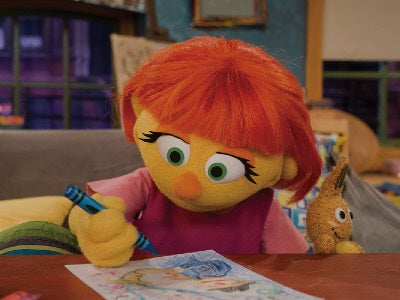
Back in 2017, Sesame Street introduced its young viewers to Julia, a new friend who’s also autistic. Julia is a lot like her fellow preschool pals (she loves to draw and paint just like Abby and Elmo), but she has some differences, too. Julia struggles with looking others in the eye and she’s not a fan of loud noises, bright lights, or the feel of finger paint. And sometimes she flaps her arms when she’s feeling overwhelmed or excited. In true Sesame Street fashion, the writers and producers consulted numerous child psychologists, autism organizations, and educators to ensure that Julia was not only presented sensitively, but accurately, too. They for-sure succeeded. It’s wonderful to see all the residents of Sesame Street love and accept Julia exactly how she is. (Watch clips of Julia on Sesame Street and learn more about autism.)
Carl the Collector, PBS Kids
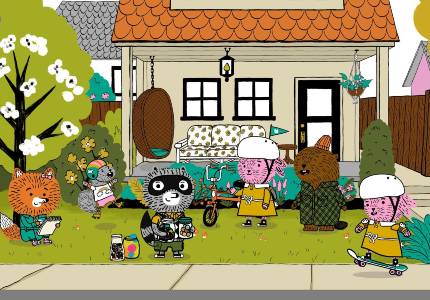
This first-of-its-kind animated series revolves around Carl, a caring racoon who happens to be on the autism spectrum. The show follows Carl, who adores collecting various found objects, and his diverse group Fuzzytown friends doing the everyday things that any kiddo would do. Carl is energetic, kind, logical, precise—and he struggles with anxiety in new situations and get flustered when plans go awry. But Carl and his pals, who are both neurotypical and neurodiverse, learn together that’s there’s no right or wrong way to be yourself. We love that Carl the Collector was created by a team of neurodiverse and neurotypical writers, voice talent, and advisors, like Dr. Stephen Shore, an autistic professor of special education at Adelphi University, which helps ensuring that the right stories are told. (For children 4 to 8 years old.)
Loop, Disney+

Loop is an animated short film from Pixar about two teenagers, Marcus and Renee, who’ve been paired up on a canoeing trip at summer camp. Marcus is a chatterbox and Renee is a non-verbal girl with autism, but the duo eventually figures out how to understand and communicate with each other and complete their journey. What’s especially lovely about Loop is that it’s stereotype-free, features a girl of color on the spectrum, and shows that Renee experiences a full array of human emotions. Plus, Marcus isn’t highlighted as any kind of a hero for being Renee’s boating partner, he’s just a regular kid. Bonus: In addition to having writing consultants who are autistic, a nonspeaking autistic woman voiced Renee’s character.
Hero Elementary, PBS Kids
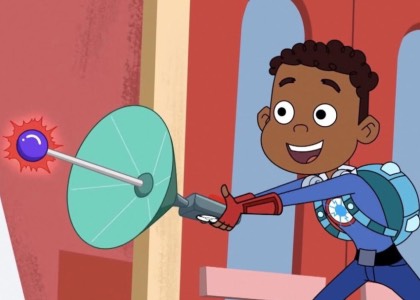
Hero Elementary is the home of four diverse kid superheroes who are all learning to master their own special powers. One of the budding heroes is AJ Gadgets, who can project his thoughts for others to see and save the day with MacGyver-like contraptions. AJ also has autism, though this fact is rarely explicitly mentioned in the series. He hates wearing wet clothes and hearing loud noises—and he flaps his hands when he’s distressed…and none of this is treated as something to be self-conscious about. At this specialized grammar school, AJ is accepted, appreciated, and included just like the rest of the gang. In short, AJ is just one of the kids!
Best Children’s Books Featuring Characters with Autism
How to Build a Hug
Written by Amy Guglielmo and Jacqueline Tourville, illustrated be Giselle Potter
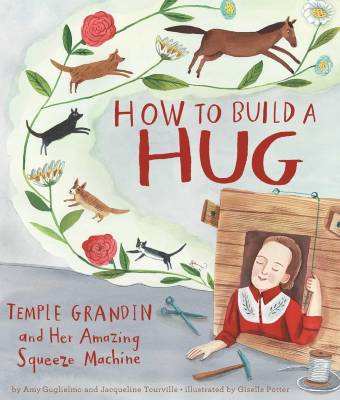
This picture book is an inspiring rewind to the childhood of famed scientist and industrial designer Temple Grandin. Here, readers catch a glimpse of Temple’s struggle to understand her autism and, especially, her extreme dislike of hugs. In How to Build a Hug, young Temple sets out to find a way to get the comfort she craves, without the distressing part. That’s when she discovers a squeeze chute at her aunt’s ranch that’s used to calm cattle for their vet visits. This triggers a eureka moment, leading Temple to create her very own contraption out of wood, cushions, and a pulley to ensure a customizable, just-right hug each time. This is more than a book about a child with autism developing her talents. It’s also about getting curious about things you don’t understand. How to Build a Hug is aimed at 4- to 8-year-olds, as is another wonderful book about Temple called The Girl Who Thought in Pictures. For slightly older children, try She Persisted: Temple Grandin.
A Friend for Henry
Written by Jenn Bailey, illustrated by Mika Song

Henry is a young boy on the autism spectrum who enters school hoping to find a friend who’s exactly like him. Henry’s requirement: His buddy needs to be a reader who loves the quiet and order. The problem? There’s no such child is Henry’s class. In fact, all his classmates are loud and filled with chaos! But when Henry meets Katie, something clicks. While the duo is alike in some ways, they’re also quite different. This award-winning, must-read book for children 3 and up does a fantastic job capturing what it’s like for a child with autism to make friends—and it gently hits home that friends don’t have to be exactly alike to appreciate each other.
All My Stripes: A Story for Children With Autism
Written by Shaina Rudolph and Danielle Royer, illustrated be Jennifer Zivoin
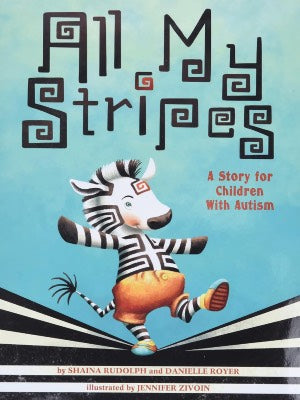
All My Stripes opens with Zane the zebra running home from school, bellowing to his Mama that nobody gets him! He goes on to share all the different ways he stood out from his classmates during the school day. For example, while everyone hoove-painted Zane went for the paintbrushes, when the class got in line when the fire bell sounded, Zane hid under his desk. An upset Zane cried that his peers only ever saw his autism stripe. But thanks to a heartwarming chat with his mom, Zane is reminded of all the amazing stripes that he’s made of, like his caring stripe and his curiosity stripe. Simple and sweet, this book teaches the importance of being proud of your differences, all while offering a glimpse of what life is like for certain kids who have autism. All My Stripes also features a reading guide with additional background info about autism spectrum disorder, plus a note to parents and caregivers complete with tips for finding support.
My Brother Otto
Written by Meg Raby, illustrated by Elisa Pallmer
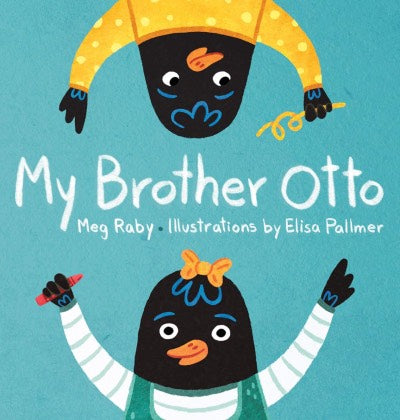
Piper and Otto are siblings who adore each other to bits. Piper expresses her love and affection through spoken words and her brother does the same through technology. That’s because Otto has non-verbal autism and relies on a tablet to communicate. But that’s not the only way Otto communicates how he’s feeling: He spins a pipe cleaner, swings super high, and snuggles up next to his sister under a pile stuffed animals to show his likes and dislikes. My Brother Otto is an endearing story for children 3 and up that subtly illustrates acceptance and understanding. For more on this pair of sweet siblings, there’s My Brother Otto and the Birthday Party, which introduces another neurodiverse pal, Ruthie, a deer, to the fold. And for another tale told through a sister’s eyes, but for kids 6 and up, there’s My Brother Charlie, co-written by Holly Robinson Pete, whose son has an autism diagnosis.
Why Johnny Doesn’t Flap
Written by Clay Morton and Gail Morton, illustrated by Alex Merry
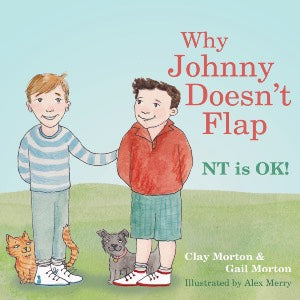
This unique children’s book is all about two friends—one who has autism and the other who doesn’t. But unlike many books on autism, this one is told through the eyes of the pal with autism, who views a lot of his neurotypical friend’s behaviors as “quirks.” For example, the narrator is baffled that Johnny looks directly into people’s eyes when he’s talking to them and dares to arrive for playdates a few minutes late. “Mom says it is because he is NT, or neurotypical. He doesn't have autism, so his brain works differently from mine, but that’s ok.” Why Johnny Doesn’t Flap is geared toward kids from 4 to 8 years old and does a great job of illustrating that “normal” is simply a matter of perspective.